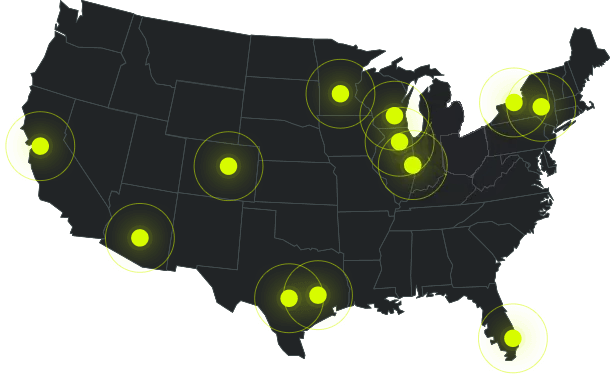About Chemical Etching
Chemical etching is also known as photochemical machining (PCM), photochemical milling, electro-chemical etching, photo chemical etching or just photo etching.
For projects that require a high level of precision and complexity, chemical etching may be a suitable manufacturing process. Chemical etching can produce complex parts that are beyond the capability of hard tooling. The chemical etching process can also create parts in dead soft or full hard material free from burrs or metal distortion. Our specialists have helped many clients develop their chemical etching projects from concept to final product, producing high-quality products with great intricacy. We can help you streamline your manufacturing process by offering shorter lead times while utilizing state-of-the-art equipment that fits within your specific budget.
Cutting Techniques Summary and How Chemical Etching Compares
| Material Thickness | Tolerance | Kerf | Part Volume | Set Up Cost | Lead Time ** | Notes | |
|---|---|---|---|---|---|---|---|
| *CHEMICAL ETCHING | 0.005″ – 0.060″ | Is +/- 10% of material thickness, .002″ min. | Equal to metal thickness | 1- Infinity | $350 Min. | 6-8 days | Metal Only. No Burrs. Beveled Edges. Half Etch and Holes. |
| FIBER LASER (4,000 & 6,000 WATT) | AL: 0.250″ SS: 0.375″ CRS: 0.500″ COP: 0.250″ Brass: 0.125″ | 0.002″ – 0.005″ | .008″ | 1 to High-Volume | Low | 6-8 days | Metals – Fast |
| OMAX WATERJET | Up to 6″ | 0.005″- 0.015″ | .020″/.040″ | 1 to 5000 | Low | 6-8 days | Metal, glass, plastic, stone, rubber, kevlar, carbon fiber, ceramics, etc.Taper up to 59 ° |
| MICROCUT™ | .0005″ – 0.5″ | 0.0005″ -0.005″ | 0.009″, 0.011″, 0.0196″ | 1 to 5000 | Low | 6-8 days | Metal, glass, plastic, stone, rubber, kevlar, laminates, carbon fiber, ceramics, etc. |
| WIRE EDM | 0.001″ – 6″ | 0.0005″ | 0.005″ | 1-200 Is Best | Low | 6-8 days | Conductive Metals, Carbon |
* Inner radius should be 100% of material thickness. Outer Radius should be 75% of material thickness.
**Dependent on geometry, volume and material: EXPEDITE options available.
How Does Chemical Etching Work?
Chemical etching is a subtractive sheet metal manufacturing process that selectively removes material using baths of temperature-controlled etching chemicals. The process produces a highly precise metal part with great intricacy in the desired shape. Chemical etching is a cost-efficient process with quick turnaround, greater design flexibility, and eliminates the need for deburring. Whether you are producing a prototype or need higher volume products, chemical etching may be the best choice for your project.
Chemical Etching Process
Step 1 – Tooling
A photo plotter is used to create a photo tool that is a negative image of the desired part. The part is nested to maximize the number of parts per sheet. Two laminates are printed, one each for the top and bottom of the metal sheets. Because each photo tool is made of film, tooling can be finished in just a few hours and at a lower cost required by other metal machining methods. Also, these qualities ensure the part designs can be changed and applied to production quickly.
Step 2 – Cleaning
The metal material selected must be degreased and removed of any surface contaminants to ensure proper adhesion between the material and photo resist during the coating process. Modern PCM companies have invested in “clean lines” for improved material cleanliness. These conveyorized machines are multi-chambered, and the material is put through multiple steps of cleaning and rinsing to ensure proper surface condition. This step is essential and can determine the quality of the finished part.
Step 3 – Coating
The material is coated with photo resist. Photo resist is photosensitive and resistant to the etchant used to cut the material. Dry film or liquid resist is applied to both sides of the workpiece to allow etching for both sides simultaneously. Advances in resist technology combined with new and improved Computer-Aided Design (CAD) artwork have enabled photo resist coatings to incorporate highly complex features.
Step 4 – Exposing
The photo tool is placed on both sides of the material with the photosensitive coating, which is then exposed to UV light. The photo tool image is now transferred to the coated material. The metal is placed into the double-sided photo tool and exposed to UV light on both sides, allowing an image to form on the photoresist, creating a durable image on both sides of the metal material.
Step 5 – Etching
A majority of metals can be etched using a relatively innocuous etchant, an aqueous ferric chloride solution. The metal is first rinsed of any remaining photoresist that has not bonded to the metal. Next, the etchants are applied to the metal in a conveyor machine. During this process, the non-bonded areas of metal are exposed to the etchants and will begin to etch on contact. Since etchants are applied to the entire sheet of metal at once, PCE maintains the unique ability to make every cut simultaneously, saving countless hours for parts with complex geometries or features, especially for fine meshes and screens.
Step 6 – Finishing
The next step in manufacturing chemically etched parts is to strip off the photoresist. Many companies utilize machines with a strip chamber, which increases efficiency. Parts may require a secondary process or treatment post-blanking before they are finished and ready to ship.
What Are the Advantages of Chemical Etching?
Low-Cost Tooling
Other processes require elaborate manual and mechanical techniques. Tooling in the photo chemical machining process is computer generated. We can work from your CAD file or our designers can convert your paper drawings, thereby increasing accuracy and reducing tooling costs.
Speed of Delivery
When time means money, the Photo Chemical Machining Process can save your firm dollars through a turn around time quicker than any method. In some instances, parts can be delivered overnight. For large quantities and for more difficult jobs, delivery should never be more than a month away.
Integrity of Metal Properties
The designer will find that Photo Chemical Machining provides a unique advantage – the internal structure of the metal is unchanged by the process. Furthermore, Photo Chemical Machining does not affect the properties of the metal worked as do some processes which change the hardness, grain structure, or ductility. Material thickness is maintained throughout the part.
Multiplicity of Design
Frequently a designer will need a large panel with a repeated pattern or with several patterns which are small and which require tight tolerances. Patterns can be reproduced photographically time after time with little additional cost.
Tooling Modifications
The Photo Chemical Machining Process allows the designer to do practical experiments at a minimum cost. Part designs can be changed and applied to production exceptionally fast.
Partial Etching
Half-etches or partial-etches (etching partway through the metal) can be used to create bend lines for manual forming, part marking, or other features.
Prototype to Production
Because of the time and cost factors in other processes, prototypes are frequently made by a method different from that used for full production. There are inherent dangers in this. Process variables could result in the production part not corresponding to the prototype and, therefore, not functioning properly. In the Photo Chemical Machining Process, however, this danger does not exist. The process can be used to make one or one million parts. This allows the engineer or designer to carry his concept from prototype to pilot to full production with parts manufactured by the same process.
Chemical Etching Applications
Chemical etching manufacturing can be used to produce both prototypes and final products, including:
- Connectors
- Electrical contacts
- Encoders
- EMI or RF shielding
- Filters/screens
- Flat springs
- Signage
- Washers and shims
Design Tips for Chemical Etching
Chemical etching is perfect for custom parts and prototypes that must be produced within a specific budget and timeline. Here are some design tips to help you design your part for the chemical etching process.
Sheet Sizes Required for Chemical Etching
- Standard size 12 x 24″
- Maximum size with in-house tooling 18 x 24″
- Maximum size 36 x 59″ (tooling cost higher)
- Smaller sheet sizes also possible
Optimal Material Thickness
- Optimal: 0.002″ to 0.030″
- 030″ to 0.062″ possible, but higher cost
- <0.002″ possible
Tolerances
- Standard is +/- 10% of material thickness. Call if you have additional needs
- Smallest diameter hole needs to be greater than material thickness
- Space between holes must be greater than metal thickness
- Inner radius must be at least 100% of material thickness, outer radius must be at least 75%
- Edge condition is burr free; however, there is a bevel on the edge equal to about 20% of material thickness
Partial Etching
Half-etches or partial-etches (etching partway through the metal) can be used to create bend lines for manual forming, part marking, or other features. Guidelines include:
- At least 0.002” metal remaining at the bottom of the partial etch preferred
- The width of the partial etch should be at least 1.5x the depth
Materials Used for Chemical Etching
Aluminum
- 1100 Series – 1100, 1145
- 2000 Series – 2024
- 3000 Series – 3003
- 5000 Series – 5052
- 6000 Series – 6061
- 7000 Series – 7075
- Alclad Anodized Aluminum
High Temp Alloys
- Inconel 600
- Inconel 718
- Inconel x750
- Hastelloy X
- Molybdenum
Stainless Steel
- 300 Series – 301, 302, 304, 304L, 316L, 321, 347
- 400 Series – 410, 420, 430, custom 455
- Preciptaion Hardening – 17-4, 17-7, 15-5
- Flapper Valve – UHB716, AEB-L, 7C27MO
Beryllium Copper
- C172
- C190
Magnetic Alloys
- Hymu 80, Hymu 800
- Hiper 50
- Carpenter 49
- M-19 Silicon Steel
Steel
- 1008/1010
- 1074/1075
- 1095
- Tool Steel
Copper & Copper Alloys
- Etp C110
- Ofhc C101 Or C102
- C7025
- Brass C260
- Phosphor Bronze C510
- Nickel Silver C752 & C770
- C194
Miscellaneous Alloys
- Beryllium
- Silver
- Fecralloy
- Tin-Lead
Nickel Alloys
- Alloy 200, Alloy 201
- Beryllium Nickeli Alloy 360
- Copper Nickel Alloy 715
- Nichrome 80/20
Controlled Expansion Alloys
- Astm F15 Kovar
- Alloy 36 Invar
- Alloy 42, Alloy 48, Alloy 52
- Nispan C
Chemical Etching Quote
Are you looking for a way to produce custom parts or prototypes quickly and within budget? Chem etching may be your answer. Tooling is less expensive and faster than other processes, making photo chemical etching useful for prototyping as well as cost-effective mass production. Get a chemical etching quote today!





 ISO 9001:2015 Certified + AS9100 Rev. D Certified + ITAR Registered + NIST 800-171 Compliant + ISO 13485 Certified
ISO 9001:2015 Certified + AS9100 Rev. D Certified + ITAR Registered + NIST 800-171 Compliant + ISO 13485 Certified

